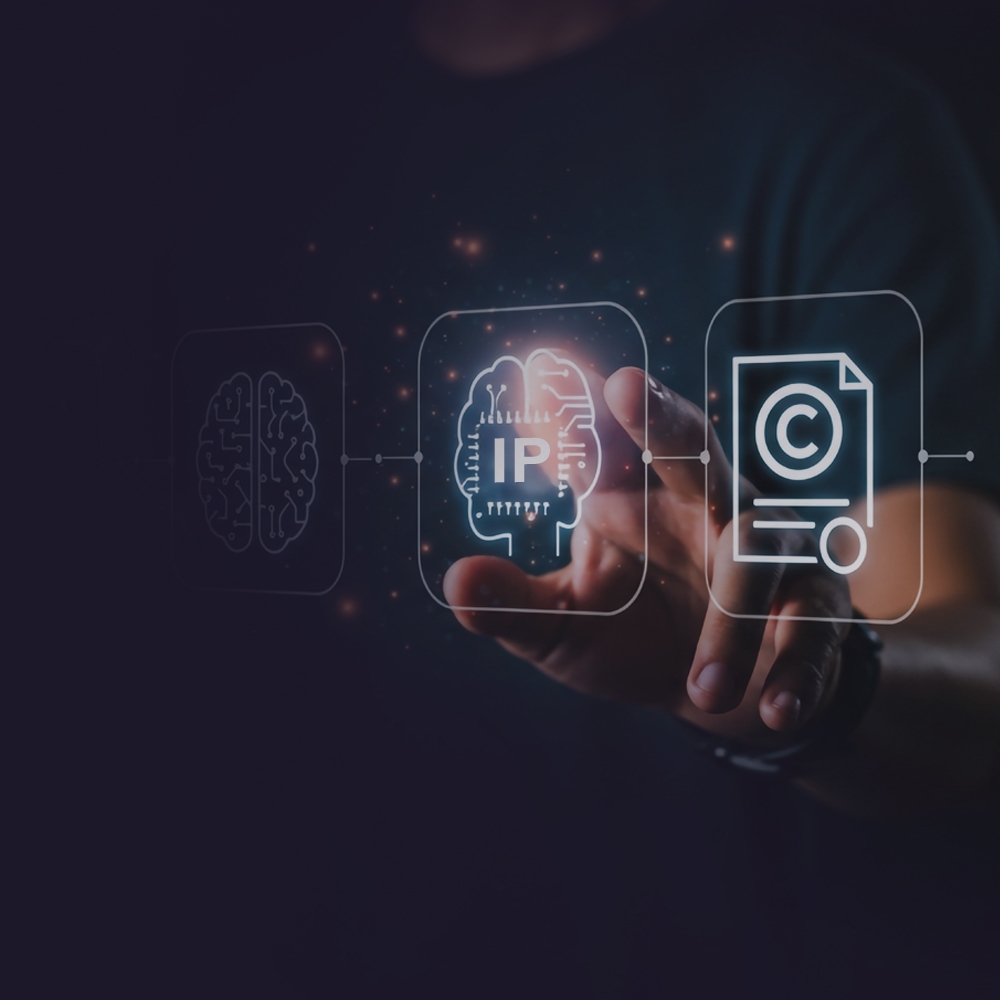08.07.2025
The IAM Patent 1000 is a respected global guide to leading patent professionals and firms. With over two decades of experience at the forefront of intellectual property law, Richard Lawrence brings both technical depth and commercial clarity to the complex worlds of cryptography, telecoms, AI, and quantum computing.
Thank you
As a partner in Keltie’s IT, Telecoms and Electronics team, Richard combines deep industry insight with first-hand in-house expertise, having led the UK IP Section at Hewlett-Packard. Today, his clients range from global corporations to fast-moving start-ups. All enjoy his strategic, business-focused approach to building and defending strong IP portfolios.
Richard’s inclusion in the IAM Patent 1000 reflects his legal excellence and his talent for making IP strategy work where it matters most: in the real world. We asked Richard a few questions about his work, his approach, and what’s next in the world of IP.
Generally, I enjoy solving problems for others and seeing them in a better place as a result of seeking my advice. That’s why I find IP consultancy very satisfying, as it provides instant results, at least compared to the patent process, where drafting to filing to grant may take several years. Yet, there is nothing to compare to getting the first significant patent granted for a client’s fundamental piece of technology. It’s a huge milestone for a company, and you’ve taken a central role in achieving it.
It’s also satisfying to know that the technology that you’ve been responsible for patenting is being used in the world. Using an optical mouse or a credit card will often remind me of cases that I’ve drafted that are used throughout the world (though the optical mouse patents will all have expired by now!)
Hopefully, less alien than much of the IP process can be for them! I like working on strategy projects because they typically derive from a client’s real-world commercial problems and so provide a clear linkage between IP and the client’s commercial needs. IP strategy work often fits better into a client’s commercial experience than patent drafting and filing, as it looks much more like standard management consultancy, applied to a specific area. An engagement will have a scoping stage, during which we will provide an analysis of the situation and outline a process for reaching a solution. This may be all that’s needed. Sometimes this stage is enough to enable the client to implement a solution themselves, but often there will be an implementation stage. One result of the scoping stage may be a work plan and timeline for implementation of the solution – implementation may be by us alone, but more commonly, the workplan will have roles for us and the client and possibly other third-party partners. Not all engagements are as project-like as this – some clients keep us on retainer or buy a block of time that gets directed to issues as they arise. But what they all have in common is the need to solve a non-trivial commercial issue where understanding of IP is necessary to reach a solution.
There are a few, and working out the top priority isn’t that simple. The easy answers are how long things take or how much they cost – that filing a patent application is the start of a process, not the end of one – but this is the sort of thing that any professional adviser would expect to have to explain, so I’ll rule those out.
I can narrow it down to two things: what a patent attorney needs to draft an effective patent application and when they should be doing it, and that a patent is a tool and not a trophy. These are both critical to ensuring that a patent is as valuable to the client as it should be.
It is so important to draft and file patent applications at the right time; if you’re nowhere near the implementation of the invention when you file, you may be able to file a patent application and even get a patent granted, but the patent may be too narrow, misdirected, or even invalid; whereas if you are at the point of commercialisation then others may have beaten you to filing, even if they do not have products in the market. It is also important to understand what you want a patent for and what its value is to you. There are a lot of reasons here, going well beyond the core reasons of “suing a competitor” and “licensing a partner”, and the ones that apply depend on the intended commercial journey. If you educate us about your commercial journey, we can advise you better. We can help you understand which (if any) patents you need and how you should best target them. We can also guide you on how to make decisions about your patent portfolio that support your commercial master plan.
That is a good question. To draft and argue cases, you need to be able to understand the relevant technology well, but you do not need to be an expert yourself. You need to be able to work with an inventor or other expert to gain that understanding. You need to get their confidence in your technical understanding, and you need to be able to challenge them. But being an expert yourself can even be a problem, as it can encourage you to reach technical conclusions too fast and without external confirmation. What I have taken away from this is a sense of what I need to understand myself, what I need others to explain to confirm or develop my understanding, and what does not need to be understood at all. Complex technology involves endless detail, and you can drown in it – a key skill is to be able to work out what you do and do not need to know, and this skill is very transferable.
I’m enjoying seeing some quantum computing work again. We have a client creating an optical interconnect for quantum computing systems, and in addition to using a lot of physics that a patent attorney doesn’t normally see, it makes me quite nostalgic for work that I was doing twenty years ago, back in corporate research lab days. It brings together two strands of research that I was supporting then: optical quantum information processing (I’ve filed an application for an optical gate for a qubit where the patent has died of old age); and optical substrates for processors to use light as a way to beat Moore’s Law. I have a background in solid-state physics with optics, so it’s enjoyable to see these technologies working together to solve problems that were not even contemplated back when I was doing research.
I think that it’s already a helpful tool, but for a relatively limited set of purposes. That’ll change, both as the AI-using tools get better, and as we get better at instructing generative AI – that’s probably the main puzzle that needs to be solved if AI is to achieve transformative results rather than just providing efficiency enhancements. We’re not that close yet. I’m less excited by the amount of unfocussed moral panic that there is around the use of AI – this is also a puzzle, but one that is consuming a lot of time and energy without any particularly rewarding answers.
Ha! Working as a patent attorney requires a lot of precision, but with an unexpected amount of creativity hidden in the corners. There would be a big board, lots of cards, and lots of pieces, but probably some journalling element as well, with a requirement for you to impress the other players with your story to win. Understanding, explaining, and persuading, mainly in writing, is the heart of our job, and that has to be included. You would also have to be able to play in campaign mode – it can take a long time to win. I don’t have anything quite like this in my collection, but I can see echoes of many excellent games. Anyway, it would all come in far too large a box, and you definitely would not get change from £100.
It can be either – that’s a great thing about running; you can think about your problems or distract yourself from them. It can certainly help, particularly for claim drafting and other work with some creative component – I find that the rhythm of running (and even of walking) is helpful for creative work. I’ve certainly worked out the key parts of a main claim on a long Sunday run, and sometimes I’ve found a new inventive step argument on a case that’s been bothering me. Patent work isn’t so suited to an ultramarathon – the brain doesn’t go to quite the right places when you’re doing one of those.
Recognised in the IAM Patent 1000 and Legal 500 for his depth of expertise and client-first approach, Richard’s impact extends far beyond the patents he drafts. Whether supporting the next wave of quantum innovation or guiding a spin-out from pitch deck to acquisition, he brings thoughtful, commercially grounded advice to every challenge.
As the world of IP grows more complex, Richard continues to stand out for his clarity, commitment, and care, making a lasting difference to his clients and the broader IP profession.
Curious about Richard’s favourite inventions? Dive into his top three picks and discover the stories behind them. https://www.keltie.com/knowledge/richard-lawrence-my-top-three-inventions-

22.10.2025
A year on: IP Advance Scheme for SMEsOne year on from the launch of the IP Advance Scheme, Nathaniel Taylor shares an update on the latest SME financial support scheme, IP Advance, launched by the UK IPO.

09.12.2025
Case Law Review: Board of Appeal Decision T 2353/22A recent Board of Appeal decision upheld the COMVIK test as the gold standard for determining whether computer-implemented methods are technical or not, and assessing inventive step.
Thank you